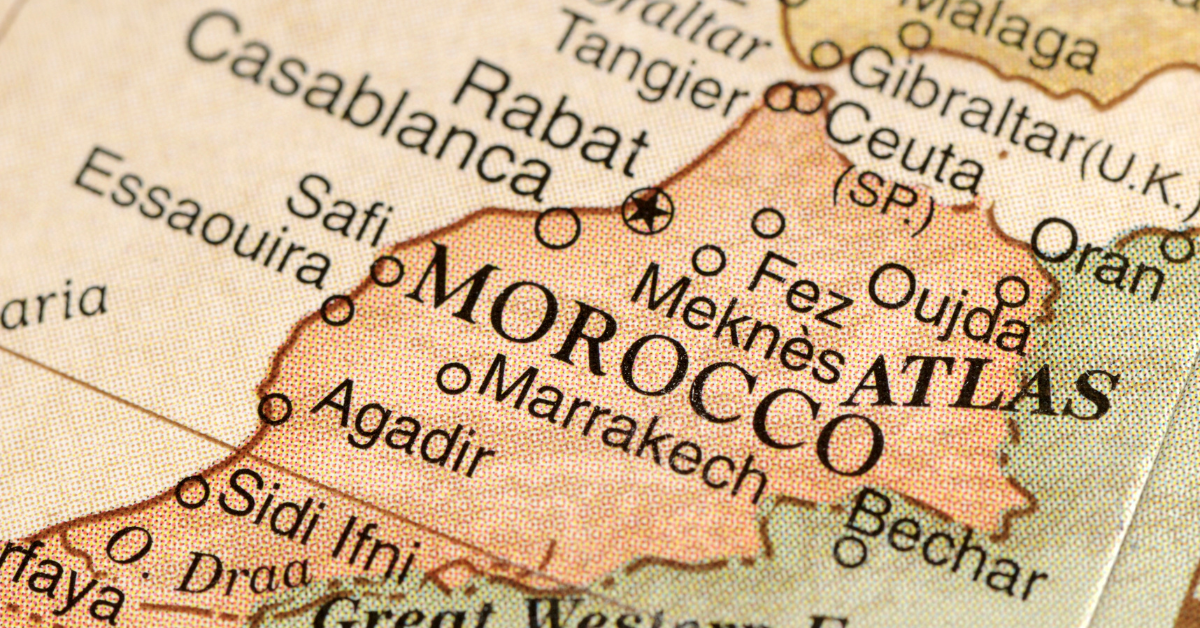In modern Japanese, “Morocco” is usually written in katakana as モロッコ. However, historical texts reveal kanji forms like “摩洛哥” and “馬羅哥”. These weren’t chosen randomly—they reflect an era when Japanese scholars sought to transcribe foreign sounds using Chinese characters, while also conveying cultural impressions. This article delves into the meanings, origins, and intentions behind these kanji spellings.
The Background of Kanji Representations for Morocco
During the Meiji through early Showa eras, it was common in Japan to represent foreign names—including place and personal names—using kanji characters. This was because katakana had not yet become the standard method for expressing loanwords, and instead, phonetic transcription through kanji was a necessary workaround.
Especially in newspapers and academic publications, readers often preferred seeing kanji forms that allowed them to intuit some meaning. This led to the creative use of kanji that resembled the phonetic structure of foreign names. Thus, the country name “Morocco” was also transcribed using kanji selected primarily for their sound.
These expressions offer insights into the creative ingenuity of Japanese scholars of the time and show how they navigated the unfamiliar terrain of foreign languages using familiar symbols. The old kanji forms are more than relics—they are cultural artifacts that show how the Japanese understood the world.
Multiple Kanji Variants of “Morocco”
There are several kanji spellings for “Morocco,” each chosen for their phonetic approximation and sometimes for their semantic implications. Here’s a breakdown of key examples and the meanings of their components:
| Spelling | Pronunciation | Kanji Meanings | Interpretation |
|---|---|---|---|
| 摩洛哥 | Marakuka | 摩 = rub, 洛 = river/capital, 哥 = song/elder brother | A standard phonetic transcription used in many foreign place names |
| 馬羅哥 | Barako | 馬 = horse, 羅 = net/gathering, 哥 = song/elder brother | Possibly reflects Morocco’s nomadic and horse-riding cultures |
| 莫羅哥 | Baraku | 莫 = negation, 羅 = net, 哥 = song | Derived from Chinese transliteration, prioritizing sound over meaning |
| 茂禄子 | Moroko | 茂 = lush/flourish, 禄 = wealth/reward, 子 = person/nation | A semi-ideographic form suggesting a prosperous land |
Each of these was carefully crafted not just to replicate the sounds of “Morocco”, but to also evoke certain visual or cultural associations that aligned with how the country was perceived.
Why Multiple Variants Coexisted
At the time, there were no standardized rules for writing foreign words in Japanese. As a result, translators, editors, and publishers each made their own decisions based on how they interpreted the foreign pronunciation. Additionally, many forms were influenced by Chinese renderings of the same names.
For instance, 摩洛哥 remains the standard way to write “Morocco” in modern Chinese. Japanese scholars often adopted such forms directly when translating texts from Chinese sources. Consequently, multiple versions of the same word appeared side by side in Japanese literature.
These differences weren’t just phonetic—they reflected divergent perceptions and levels of familiarity with the foreign place being referenced.
How Kanji Characters Were Selected
When choosing kanji for phonetic transcription, the priority was on sound. However, other elements like visual appearance, cultural connotation, and meaning also played important roles. Here’s a summary of common syllables in “Morocco” and the kanji used to represent them:
| Sound | Example Kanji | Meaning |
|---|---|---|
| ma | 摩, 馬, 莫 | 摩 = friction, 馬 = horse, 莫 = negation |
| ro | 洛, 羅, 禄 | 洛 = river/capital, 羅 = net/order, 禄 = wealth |
| ko | 哥, 子 | 哥 = elder brother/song, 子 = person/nation |
This approach shows how phonetic accuracy was carefully balanced with a desire to convey a sense of dignity, status, or relevance to the foreign concept being named.
Why Katakana Became the Standard
Following World War II, Japanese underwent a series of reforms that led to the widespread adoption of katakana for all foreign words. This shift provided several clear benefits: more accurate pronunciation, greater uniformity, and less risk of misinterpretation.
Katakana was originally developed to express sounds, making it ideal for transliterating non-Japanese names. It avoids the semantic baggage of kanji and provides a clean, visual clarity that’s especially useful in education, media, and technical writing.
Here’s a summary of why katakana became the norm:
| Aspect | Benefits of Katakana |
|---|---|
| Pronunciation | Closer to the original sound |
| Clarity | No confusion caused by kanji meanings |
| Uniformity | Consistent use across education, government, and media |
| Simplicity | Faster and easier to write and read |
As a result of these advantages, kanji forms like 摩洛哥 and 馬羅哥 gradually fell out of use, leaving モロッコ as the universally accepted spelling.
What These Variants Reveal About Cultural Understanding
The various ways of writing “Morocco” in kanji reflect more than just linguistic experimentation. They offer a window into how Japanese scholars and writers perceived foreign cultures through the lens of their own language system.
For example, 馬羅哥 evokes nomadic traditions or desert imagery, while 茂禄子 conjures a land rich in resources and prosperity. These were not random choices but carefully considered attempts to capture the essence of an unknown country in a familiar script.
Different institutions, scholars, and publishers had different preferences, and these preferences reveal a great deal about intellectual trends and worldviews during that era. The kanji spellings weren’t just about transliteration—they were acts of cultural interpretation.
Conclusion
Writing “Morocco” in kanji, such as 摩洛哥, 馬羅哥, 莫羅哥, or 茂禄子, reveals a fascinating intersection of phonetics, semantics, and cultural imagination. Each variant reflects a unique effort to make a foreign concept comprehensible and meaningful within the Japanese linguistic framework.
These phonetic kanji spellings are more than old conventions—they’re linguistic artifacts that embody Japan’s historic attempts to understand the wider world through language. While katakana has since become the norm, revisiting these kanji forms helps us appreciate the depth, flexibility, and creativity of the Japanese language.






